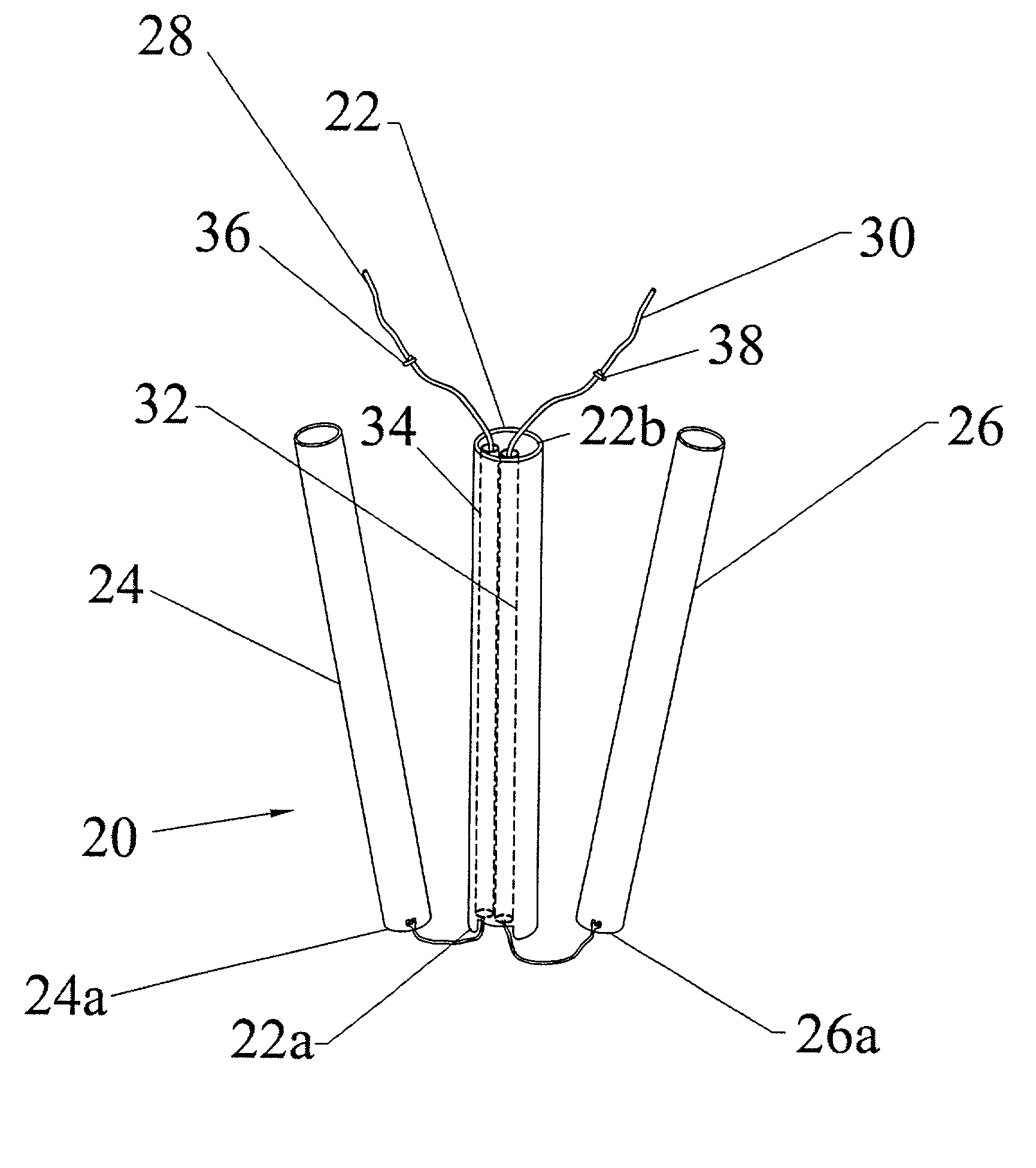Multiportal device with linked cannulae and method for percutaneous surgery
a multi-portal device and percutaneous surgery technology, applied in the field of medicine, can solve the problems of long recovery time, postoperative scarring, and extensive scarring, and achieve the effects of increasing the number of cannulae, simple construction, and simple us
- Summary
- Abstract
- Description
- Claims
- Application Information
AI Technical Summary
Benefits of technology
Problems solved by technology
Method used
Image
Examples
Embodiment Construction
[0042]A general three-dimensional view of the multiportal device with linked cannulae of the invention for percutaneous surgery (hereinafter referred to as “multiportal device”) is shown in FIG. 5. In the embodiment shown in this drawing, the multiportal device, designated in general by reference numeral 20, consists of three linked cannulae 22, 24, and 26. It is understood that three cannulae are shown only as an example and that the principle of the invention is equally applicable to the embodiments with two or more than three cannulae. The device per se is very simple and consists of a required number of cannulae, 22, 24, and 26 in the illustrated case, pre-linked at their distal ends 22a, 24a, and 26a, respectively, with flexible elements such as wires or threads 28 and 30. More specifically, both threads 28 and 30 are passed through the central cannula 22 and their ends that project through the distal end 22a are secured to the walls of the neighboring cannulae 24 and 26 respec...
PUM
 Login to View More
Login to View More Abstract
Description
Claims
Application Information
 Login to View More
Login to View More - R&D
- Intellectual Property
- Life Sciences
- Materials
- Tech Scout
- Unparalleled Data Quality
- Higher Quality Content
- 60% Fewer Hallucinations
Browse by: Latest US Patents, China's latest patents, Technical Efficacy Thesaurus, Application Domain, Technology Topic, Popular Technical Reports.
© 2025 PatSnap. All rights reserved.Legal|Privacy policy|Modern Slavery Act Transparency Statement|Sitemap|About US| Contact US: help@patsnap.com



